Asparagus Benefits
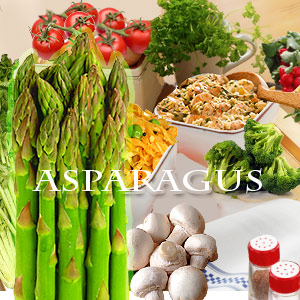
Slim green spears popping up as spring sets in, asparagus is a vegetable that derived its name from the Persian word asparag meaning sprout. Asparagus belongs to the lily family. Europeans use asparagus (white) extensively. Asparagus has small leaves near the tip that appear like tightly packed scales. Asparagus is famous as a cooking choice as it has a mild flavor and is crunchy. In the United States the green variety is quite popular.
Asparagus - (the Latin name is Asparagus Officinalis) is green in color, a variety named viola is purple in color. A variety of asparagus is grown underground so that it remains white and does not turn green. The color of the plant is determined by the amount of sunlight it is exposed to. The size and age of the asparagus depends upon the thickness of its stem, the thicker the flesh the older the plant is. The white and green varieties are harvested when the stalks are 8 inches high and ¼ - ½ inch thick. Asparagus is harvested by hand. The best growing season is between February and August.
Asparagus can be grilled, sautéed, boiled, steamed, pickled or served cold. It is a great appetizer and can be pureed for use in soup and soufflés. It is also a great accompaniment for soups, salads, etc.
Buying asparagus
Pick asparagus that has firm and bright green stalks. The head must be compact. Select those where the spears have tight closed leaves. The tips must be purplish with firm stalks. Avoid dry limp and wrinkled stalks and opened buds. You can peel the skin if it appears too thick. The white stalk is often tasteless. Cook the asparagus quickly to prevent the drab olive color. Add salt while cooking in water to reduce loss of moisture from the asparagus.
Store asparagus
- Trim the stem, wash well with warm water, pat dry and store in moisture proof wrapping, refrigerate. Use within 2 days.
- Wrap a moist paper towel around the stem ends.
- Place the asparagus in a standing upright position in 2 inches cold water.
- Canning - Wash, boil in water for 3 minutes, transfer to cans, add salt as required, and add boiling water so asparagus is immersed. Use within a year.
- Freezing - Trim stem ends, wash, blanch in boiling water for 2 minutes, cool immediately in ice water. Drain well and pack in plastic freezer bags. Do not defreeze while using, use within 8 months
Asparagus nutrition
Asparagus is a dieter's delight, being just 20 calories for about 100 gm. Potassium, so ideal for reducing belly fat is found in asparagus. Being a rich source of antioxidants such as lutein, zeaxanthin, carotene and crypto-xanthins, asparagus works wonders at fighting viral infections and neuro-degenerative problems. Harness the power of Vitamin K abundantly found in asparagus. It helps limit neural damage in the brain and has been found useful in treating Alzheimer's disease.
The folate in asparagus is especially beneficial to women, more so for pregnant women. It also helps in reducing the risk of heart disease as it helps reduce inflammation. Asparagus was considered as an Aphrodisiac in the medieval period. It is hard to find corroborative evidence to attribute this aphrodisiacal benefit to asparagus. Most of the data we found were anecdotal in nature. Be that as it may, folate rich Asparagus is a heathy food anyway.
Asparagus benefits
- Good source of protein and fiber thereby promoting digestion and immunity.
- Vitamin K promotes bone health and healthy blood clotting.
- Regulates blood sugar levels as it is rich in Vitamin B.
- Green asparagus promotes healthy kidney functioning.
- Asparagus is an excellent diuretic and hence is good in treating swelling, arthritis, PMS- related water retention.
- Improves lactation for nursing mothers.
- Anti-cancer properties, particularly lung cancer
- Prevents urinary tract and bladder infections
- Prevents hair loss
- Anti fungal and antiviral properties.
Asparagus recipes
Wrap-in bacon asparagus
Asparagus 1 pound
Bacon 8-10 strips
Wash and trim the spears of asparagus. Cut bacon strips cross into half. Wrap the bacon strip around the asparagus; ensure the tips are left free. Spread on a cookie sheet. Bake for 20-25 minutes in a pre-heated 400-degree oven. Serve warm.
Grilled asparagus
Asparagus 1 pound, trimmed and peeled
Extra-virgin olive oil 3 tbsp
Salt and black pepper to taste
Lemon 1
Toss the asparagus with the oil, pepper and salt. Place over a preheated grill and cook. Turn it occasionally to ensure even cooking on all sides. Transfer to serving plate, drizzle with olive oil and lemon. Serve immediately.
Asparagus pasta salad
Asparagus 1 ½ cups, chopped
Pasta 1 cup, uncooked
Carrots ½ cup, sliced thin
Red bell pepper ¼ cup, diced
Red onion ½ cup, diced
Italian dressing ¾ cup
Oregano leaves 1 tsp
Salt to taste
Pepper to taste
Cook pasta in a large pot of salted water. Drain water and transfer pasta to a large bowl. Add the remaining ingredients. Toss well to coat, season with salt and pepper. Refrigerate for 2 to 4 hours. Serve cold or at room temperature.
Asparagus soup
Fresh asparagus 1 pound
Vegetable broth 1 ¼ cup plus another ½ cup
Onion ¾ cup, chopped
Parmesan cheese ¼ cup, grated
Soy milk 1 cup
Yogurt ½ cup
Lemon juice 1 tsp
All purpose flour 2 tbsp
Butter 1 tbsp
Salt to taste
Pepper to taste
Take the ½ cup vegetable broth in a saucepan and add onion and asparagus to it. Bring the broth to boil, simmer until the vegetables are tender. Remove a few asparagus for garnishing. Blend the rest till smooth.
In another pan, melt butter and sprinkle the flour, salt and pepper into it. Let the mixture cook for about 2 minutes. Add the 1 ½ cup vegetable broth while increasing the heat, keep stirring until the mixture begins to boil. Stir in the vegetable puree and milk, and keep stirring. Add the yogurt and later the lemon juice. Ladle into bowls. Garnish with asparagus and sprinkle the parmesan cheese, serve.
Asparagus cooking tips
- 1 pound of fresh asparagus equals 16 to 20 spears and amounts to 3 cups trimmed, or 2 1/2 cups of cooked asparagus.
- Do not cook asparagus in an iron pot as it may cause discoloration of asparagus and the iron pot
- Do not over cook asparagus as it may reduce the flavor of asparagus.
- Limp asparagus can be refreshed by trimming the stalk ends and placing it in a glass of cold water stalk side down and refrigerating it.
- Steamed asparagus tastes great with butter or garlic.
- Use fresh asparagus as far as possible. Freshly boiled and drained asparagus is best for consumption.
- You can puree asparagus with spinach or cauliflower. This can later be used in broths or with roasted veggies. Add cashew or walnut slivers for added crunch.
Top of the Page: Asparagus Benefits
Tags:#asparagus benefits #asparagus recipes #asparagus nutrition #asparagus salad #asparagus soup
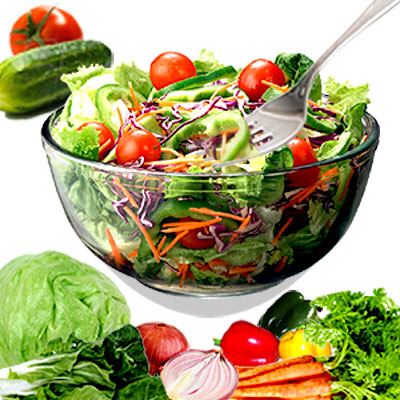 Food and Nutrition Facts
Food and Nutrition Facts Chamomile
Parsnip Soup
Dim Sum
Gazpacho Soup
Whole Grain Cereal
Jicama Nutrition
Bok Choy Stir Fry
Chia Seeds Benefits
Teff Nutrition
Kaniwa
Flax Seed
Wheatgrass Benefits
Kelp Benefits
Types of Chili Peppers
Medicinal Benefits of Pomegranate
Arugula Leaves
Maca Root
Pitaya Fruit
Benefits of Celery
Leek
Asparagus Benefits
Oyster Stew
Oyster Mushroom
Lupin Beans
Quinoa
Freekeh
Extra Virgin Olive Oil
Dill Pickle
Sauerkraut
Fat Burning Foods
Nutrition Chart
Food Combining
Calorie Counter
calories ...
Non Alcoholic Beverage
Punch Recipes
Food Label Nutrition
Homemade Sausages
Cooking Steak
Eating on a Budget
Budget Friendly Recipes
Quick Recipes
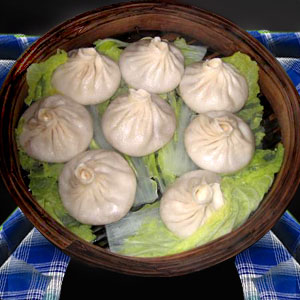 Healthy Packed Lunch
Healthy Packed Lunch Overnight Oats Recipes
Eggplant Casserole
Brunch Recipes
Burrito Recipes
Muffin Recipes
Cupcake Frosting
Apple Crisp
Stir Fry Cooking
Seafood Salad Recipe
Cooking Corn on the Cob
Finger Food Recipe
Sandwich Recipe
Bread Stuffing Recipes
Easy Chili Recipes
Picnic Recipes
Edible Mushroom Recipes
Mushroom Soup Recipes
Dip Recipe
Tapas Recipe
Corned Beef Recipe
Canned Salmon Recipe
Tilapia Recipes
Crumb Cake
Flourless Chocolate Cake
Regional Food
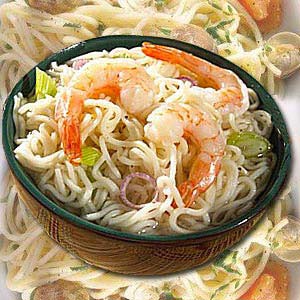 Lasagna Recipe
Lasagna Recipe Peruvian Ceviche
Chinese Food Recipe
Vietnamese Food Recipe
Malaysian Food
Korean Food Recipe
Indian Curry Recipe
Edible Rice Paper
Mexican Food Recipe
Quesadilla
Guacamole Dip
Italian Food Recipe
Spanish Food Recipe
Kosher Food
Falafel Recipe
Tandoori Chicken
Noodles
Canape
Couscous
Meatloaf
Chowder
Gumbo Recipe
Crockpot Recipes
Moroccan Food
Healthy Food
Pre Workout Snack
Matcha Tea
Simple food Swaps to Lose Weight
Foods to Beat Stress
Foods to beat Insomnia
Bone Density Foods
Prebiotic Foods
Kefir Grains
Agave Nectar
Spicy Trail Mix
Pesto Sauce
Homemade Hummus
Crab Cake Sauce
Bamboo Shoots Nutrition
Lemon Grass Plant
Butter Beans Recipes
Loose Green Tea
Seaweed Nutrition
Healthy Food
Low Fat Granola Bar
Steel Cut Oatmeal
Fruit Pizza
Pizza Toppings
Green Smoothie
Healthy Meal Planning
Delicious Mealtime Recipes
Heart Healthy Fats
Healthy Heart Recipe
Healthy Dinner Recipe
Healthy Dessert Recipe
Healthy Fast Food
Healthy Kid Recipe
Probiotic Food
Diabetic Friendly Foods
Fruit Salad Recipe
Bread Pudding
Tofu Recipe
Oat Bran
Broccoli Salad
Avocado Recipe
Iron Rich Food
Brain Foods
Antioxidant Food
Natural Diuretic
Low Fat Cooking Tips
Rice Pilaf Recipe
Low fat Chicken Recipe
Food Tips
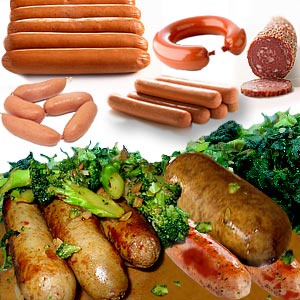
Sous Vide Cooking Technique
Natural Sugar Substitute
Stevia Sugar Substitute
Sunflower Seeds Nutrition
Bouquet Garni
Cake Decorating Tips
High Satiety Foods
Thanksgiving Dinner
Safe Food Storage
Frozen Food Storage Tips
Cold Storage Food Tips
Leftover Recipe
Food Pyramid
Dairy Free Food
Microwave Cooking
Food Intolerance
Homemade Ice Cream
Apple Cider Vinegar
Benefits of Honey
Beverage Cooler
Food Poisoning Symptom
Food Allergy Symptom
Food Addiction
Top of the Page: Asparagus Benefits
Popularity Index: 101,359

